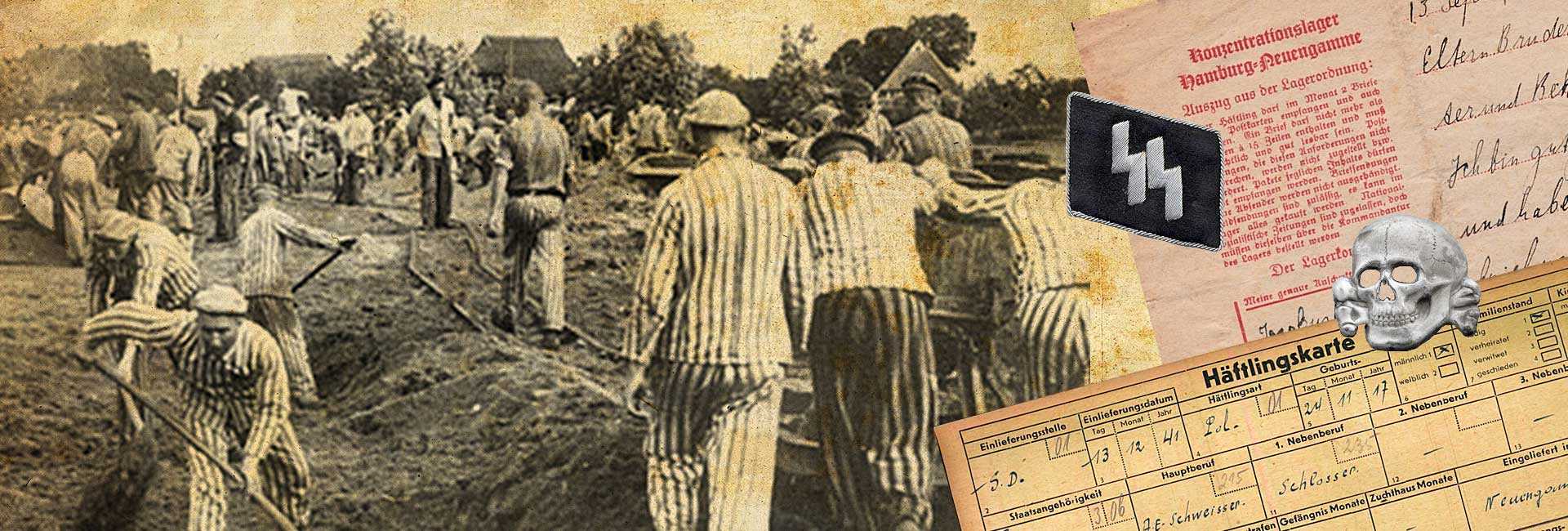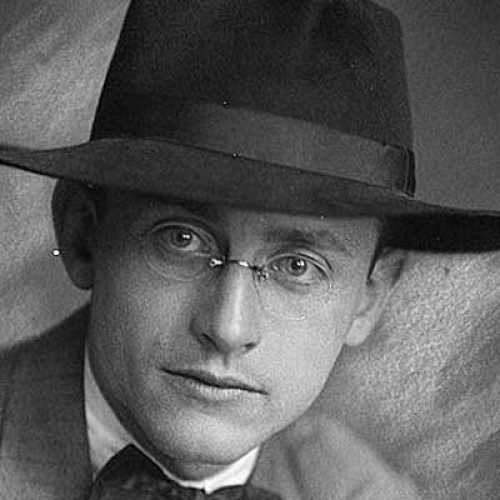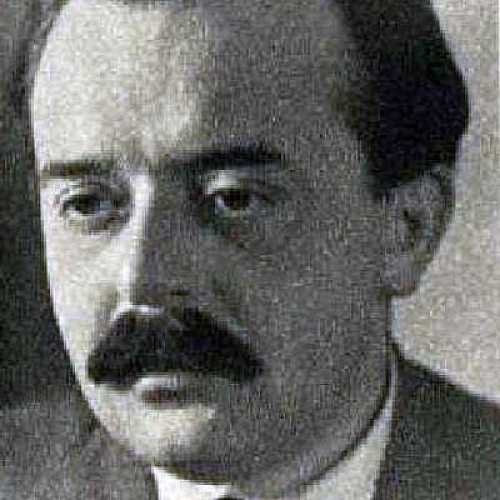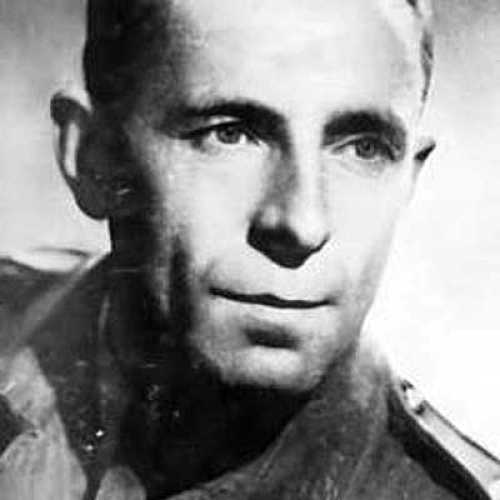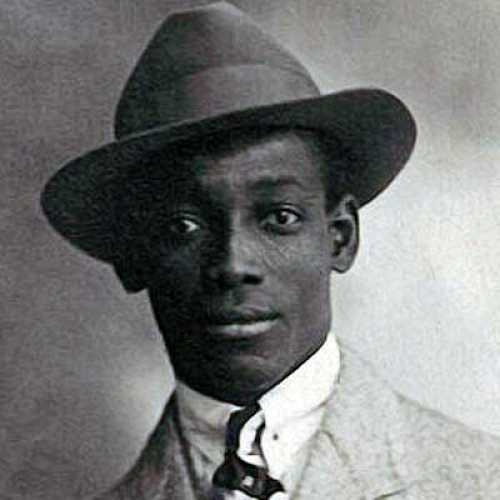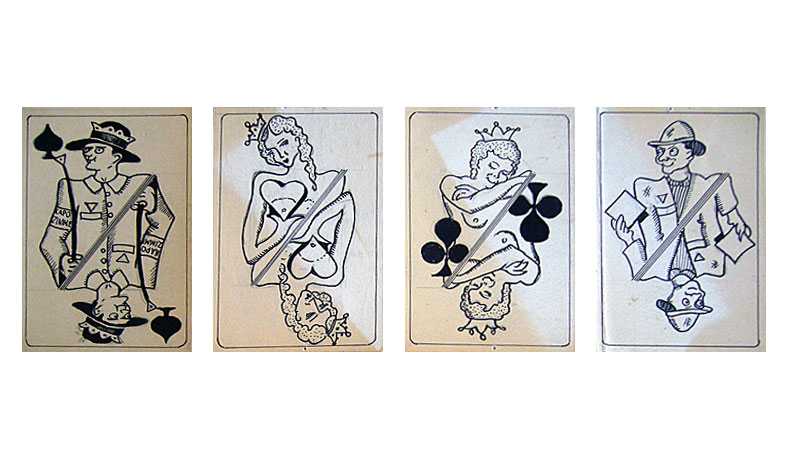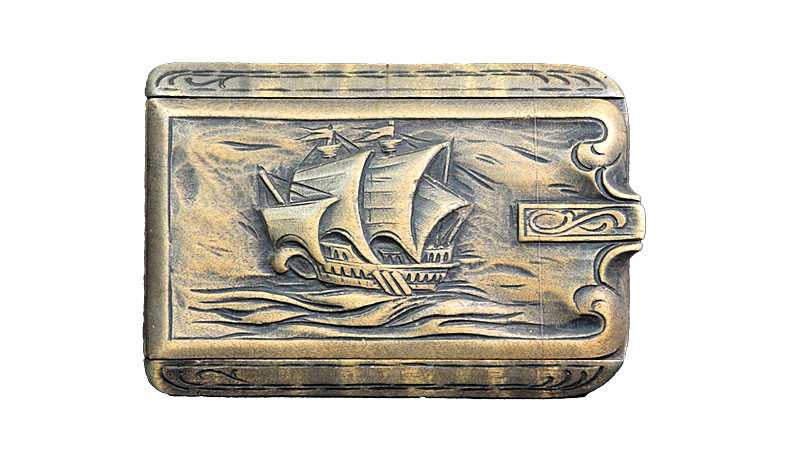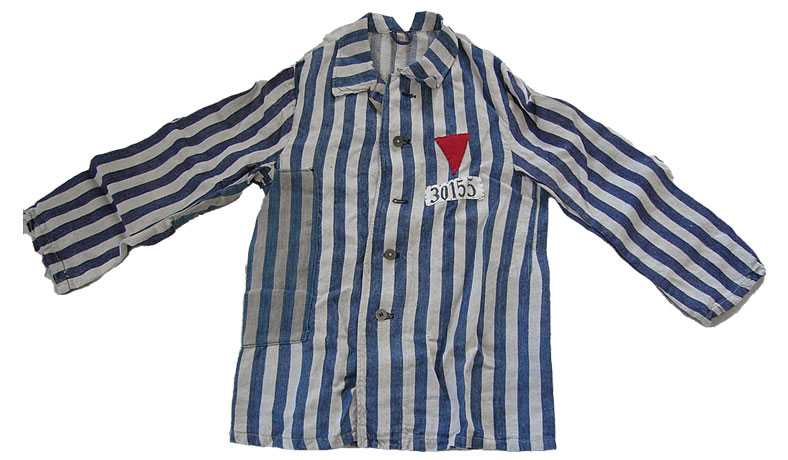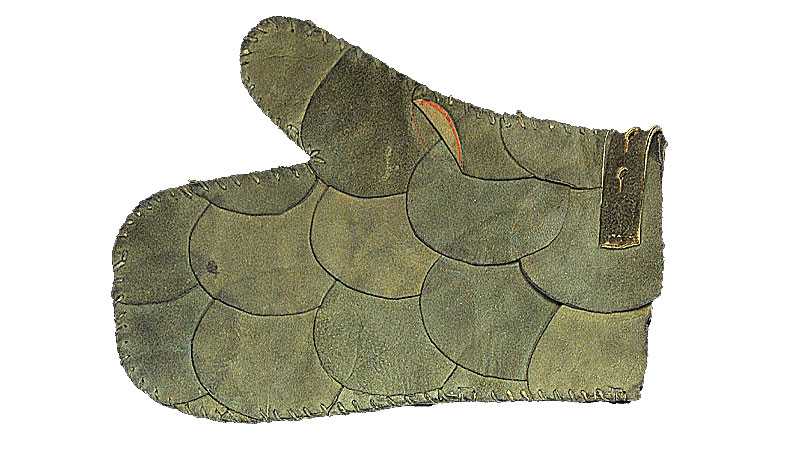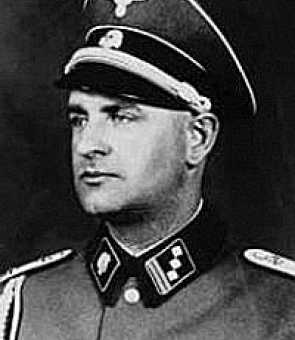
In December 1938, the SS established a sub camp of the Sachsenhausen concentration camp in an abandoned brick factory in the Neuengamme suburb of Hamburg. In the early summer of 1940, Neuengamme became an independent camp and remained the main concentration camp in North-West Germany until 1945. The Gestapo and the SS security service sent tens of thousands of people from across occupied Europe to Neuengamme concentration camp.
"For evil to flourish, it only requires good men to do nothing".
Simon Wiesenthal
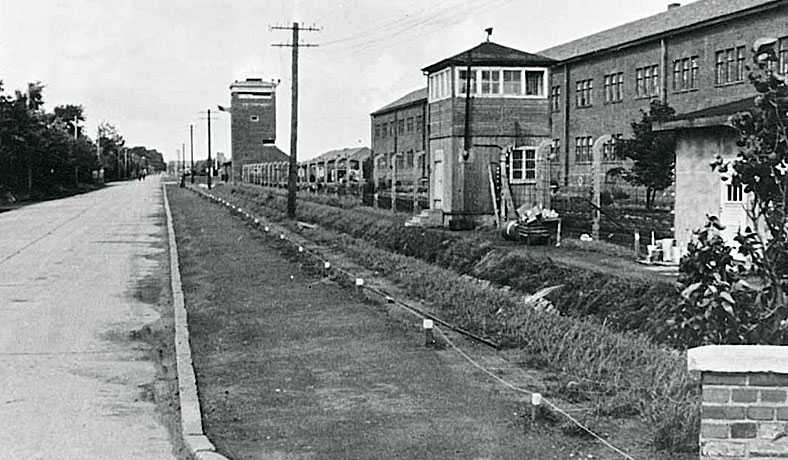
The road leading up to the camp

SS check the work of the slave labourers
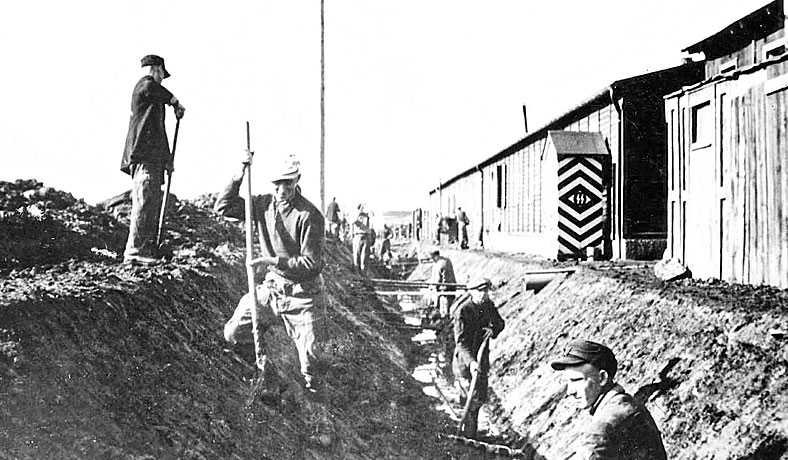
Slave labourers digging trenches with an SS booth in the background
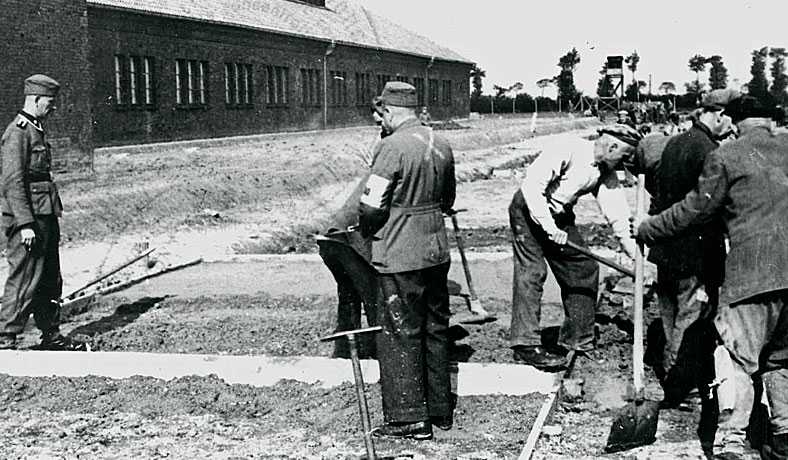
SS supervise the work of the slave labourers
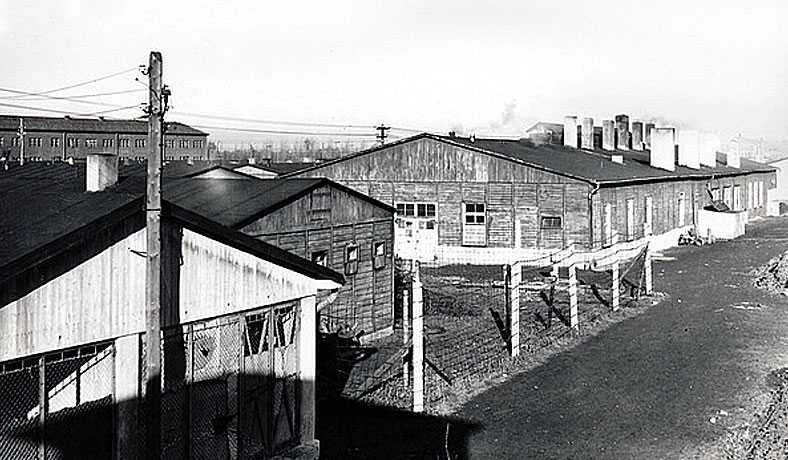
Detention area at Neuengamme
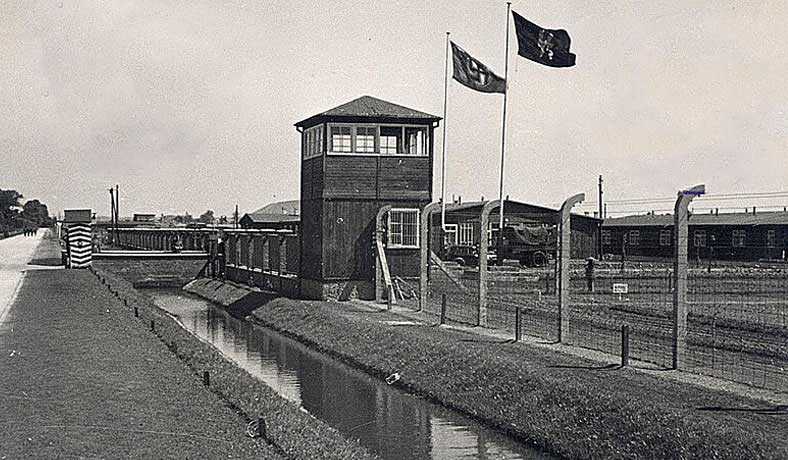
Entrance to the SS barracks with guard tower
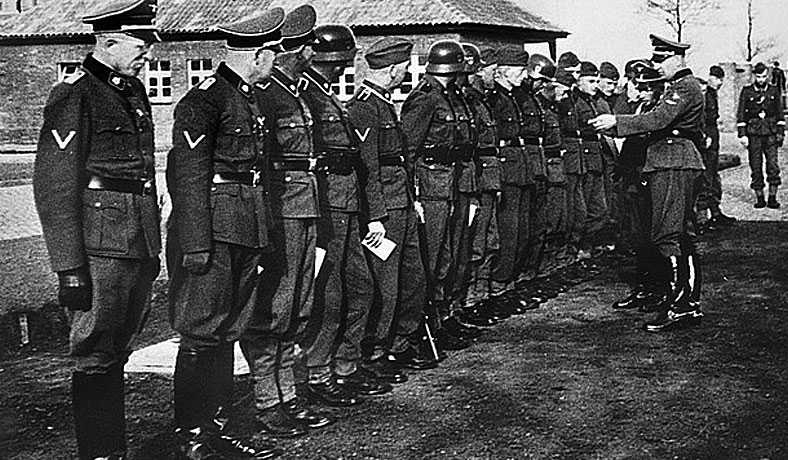
Commandant Max Pauly handing out medals
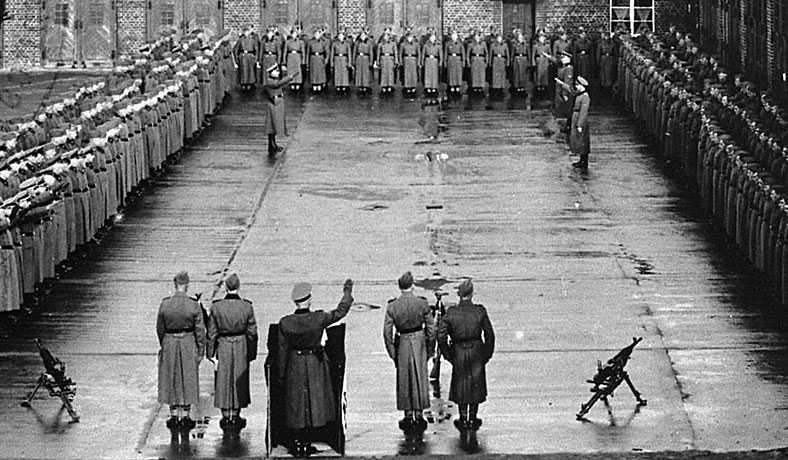
SS staff at roll call in Neuengammeon 20th anniversary of Munich Putsch
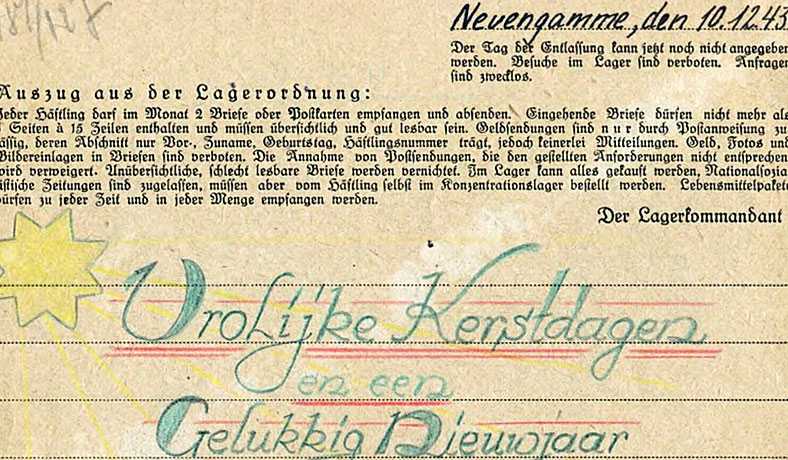
Dutch Christmas Card from 1943
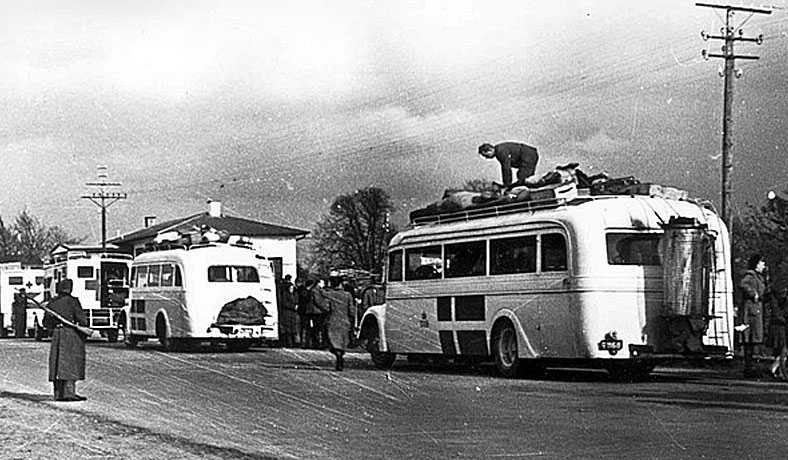
Scandinavian prisoners are evacuated on Red Cross buses
- The road leading up to the camp
- SS check the work of the slave labourers
- Slave labourers digging trenches with an SS booth in the background
- SS supervise the work of the slave labourers
- Detention area at Neuengamme
- Entrance to the SS barracks with guard tower
- Commandant Max Pauly handing out medals
- SS staff at roll call in Neuengammeon 20th anniversary of Munich Putsch
- Dutch Christmas Card from 1943
- Scandinavian prisoners are evacuated on Red Cross buses
History, definition and facts about Neuengamme
In Neuengamme concentration camp and its more than 85 satellite camps, which were established all over northern Germany for construction projects and armaments production, prisoners had to do hard labour for the war economy. Most were imprisoned because they had resisted German occupation, because refused to perform slave labour, or because they were victims of racial persecution. Living and working conditions were murderous. Altogether, at least 42.900 people died in the Neuengamme main camp and satellite camps, or they died on the death marches when the camps were evacuated or when the prisoner ships were bombed. Another several thousand prisoners died after they were transported from Neuengamme to other concentration camps, or they perished after the war from the results of incarceration.
The company Deutsche Erd- und Steinwerke GmbH, which was owned by the SS, purchased an abandoned brick factory and the land surrounding it on the outskirts of the suburb of Neuengamme in the autumn of 1938. On 12 December 1938, the first 100 prisoners arrived in Neuengamme from Sachsenhausen concentration camp. Their job was to bring the brick factory back to working order. Guards were brought in from Buchenwald concentration camp. In the beginning, the conditions of imprisonment were very different from the circumstances in the Neuengamme camp in later years. At the time, rations were still somewhat sufficient, for the most part.
Three months after the war began, it was decided that Neuengamme would be expanded into a large concentration camp. The city wanted to redevelop the shores of the Elbe River in Hamburg by lining the river with “Führer buildings” made of clinker bricks. In April 1940, the Hanseatic City of Hamburg signed an agreement with the Deutsche Erd- und Steinwerke company, granting it a loan of more than one million Reichsmarks to construct a larger brick factory. The city also promised to build a railway connection to the camp as well as regulate the Dove-Elbe (a tributary of the Elbe River) and construct a branch canal with a dock. In return, the SS promised to provide “prisoners for working on this project, as well as guard forces, free of charge”.
In the spring of 1940, Neuengamme thus became an independent concentration camp. The prisoners were forced to build the barracks, watchtowers and fences. Mistreatment, exhaustion, hunger and work accidents soon caused the first deaths among the prisoners. By the end of 1940, there were already 2.900 prisoners being held in Neuengamme. Their work included expanding the camp, broadening the Dove-Elbe, constructing the branch canal and dock, building the new brick factory and digging clay in the pits.
Death
Prisoners were confronted with death on a daily basis. They saw their fellow prisoners dying or dead, and they lived in constant fear of dying themselves. Prisoners in Neuengamme concentration camp were beaten to death, drowned, hung, shot or poisoned with gas. They starved or died because of the insufficient clothing, sleeping quarters and sanitary conditions. They died from a lack of medicine or because they were denied medical assistance, from physical overexertion while working, or from mistreatment.
In 1942, the SS began carrying out public hangings as a punishment and deterrent. The police and the judiciary also used the concentration camp for carrying out executions. After any gold teeth had been removed, the bodies were usually burned. In the beginning, this was done at the municipal crematorium in the Ohlsdorf cemetery, then Neuengamme concentration camp began using its own crematorium in 1942. Relatives of the deceased could request an urn supposedly with the ashes of their loved ones in return for a fee.
Prisoner treatment
Concentration camps were originally established by the Nazi regime to detain their political opponents. In 1937, they began to imprison other victims of persecution in growing numbers as well: Jews, Sinti and Roma, homosexuals, and alleged “anti-socials” and “criminals”. On entering the camp, the SS confiscated all personal belongings and issued prisoner numbers in place of names. Different coloured triangles were attached to prisoners' clothing, indicating the reason for their imprisonment. In the beginning, German nationals were the largest group of prisoners in Neuengamme concentration camp. In total, 9.500 Germans were imprisoned in the camp over the years, including roughly 400 women who were deployed in the satellite camps, and not in the main camp.
From 1941 onwards, the majority of prisoners in Neuengamme concentration camp came from countries occupied by Germany. Between 1941 and 1942, Polish prisoners were the largest group in the camp; from 1942 and 1943 on, Soviet prisoners were the majority. In total, 90 percent of the prisoners in Neuengamme concentration camp were foreigners. More than half came from Eastern and Central Europe, but there were also large groups of prisoners from France, the Netherlands, Belgium and Denmark. They were imprisoned because they resisted German occupation, because they were slave labourers serving punishment or because they had been abducted as hostages and victims of “acts of retaliation”. In 1941, Soviet POWs began arriving at Neuengamme, and in 1944 and 1945 larger groups of Jews from different European countries were sent to the camp.
Overall 80.000 men and more than 13.000 women were registered and issued a prisoner number at Neuengamme concentration camp. Another 5.900 people were either not listed in the camp registry, or they were filed separately. It has been verified that at least 42.900 people lost their lives due to deliberately poor living and working conditions. Another several thousand prisoners died after they were sent to other concentration camps, or they perished from the results of incarceration after their liberation. We must therefore assume that more than half of the approximate 100.400 prisoners in the Neuengamme concentration camp did not survive Nazi persecution.
Slave labour
Concentration camp prisoners were forced to work for business ventures owned by the SS, which then profited financially from their labour. Neuengamme concentration camp was initially established as a “work camp” for the production of clinker bricks. The prisoners had to perform hard labour, beginning with building the prisoners’ barracks, the SS barracks and the new brick factory. One of the work details with the most horrible working conditions was making the Dove-Elbe navigable and digging a branch canal with a dock. After the new brick factory began operating in 1942, prisoners were increasingly sent to work in the clay pits to extract clay.
Work was characterised by violence and harassment from the guards who were always ready to beat the prisoners. The prisoners worked from morning to night, regardless of whether it was raining, hot, or cold enough to get frostbite. They were forced to work 10 to 12 hours a day, without enough food and with clothing that offered no protection from the elements.
In the second half of the war, armaments production became the main focus of work in the concentration camp. The prisoners were employed in the armaments factories of the Jastram and Messap companies, the Neuengamme metal works (Walther-Werke) and the factory of the SS-owned company Deutsche Ausrüstungswerke (DAW).
Life in Neuengamme
Hunger
Daily life was characterised by arbitrary punishments, violence and submission. Prisoners struggled not to give up in their ongoing fight for survival. The smallest violation of a guard’s orders could be punished severely. Provisions were so grossly insufficient that many prisoners died within a few months. The food was of very poor quality and often inedible. Hunger was all prisoners could think about, and it determined their behaviour throughout the entire day. Many prisoners tried to acquire food illegally, while others managed only to survive because they received food packages from their relatives or from the Red Cross.
Clothing
Prisoners’ clothing initially consisted of blue-and-white striped uniforms made of low-quality material. Shoes were primitive constructions mainly consisting of wooden soles with pieces of fabric or leather. Each prisoner’s number and a coloured triangle indicating the reason for their imprisonment was sewn to their jacket and trousers. In 1943, civilian clothing, some of which came from the extermination camps, began to be handed out to the prisoners. These items of clothing were marked on the back with strips of sewn fabric or large Xs in yellow paint to identify the wearers as prisoners, in case they escaped.
Housing
In the beginning, the prisoners slept on the floor in crowded wooden barracks, each consisting of two blocks. In 1941, three-tier bunk beds, lockers, tables and benches were installed in the blocks. More than 300, and sometimes even as many as 600 prisoners were usually crammed together in each of these blocks, which were 50 metres long and 8 metres wide. In 1943 and 1944, two brick buildings with four blocks for housing 500 to 700 prisoners each were erected. From 1944 to the end of the war, bunks were shared by two, and even three prisoners as a rule. This overcrowded situation made it impossible to get a good night’s rest. The sleeping quarters also smelled of sweat and faeces, because sanitary facilities were limited and many prisoners suffered from gastrointestinal disorders. There was no privacy. Stronger prisoners often managed to get the best places to sleep.
SS Guards at Neuengamme
The SS commandant was in charge of the main camp and the satellite camps. During its existence, Neuengamme concentration camp had three commandants: Walter Eisfeld (1940), Martin Weiß (1940–1942) and Max Pauly (1942–1945). Over the years, a total of 4.500 SS men served in Neuengamme concentration camp and its satellite camps, with as many as 500 SS men serving at any given time. Most of the SS men had direct contact with the prisoners, and their harassment and mistreatment of their wards was part of the daily routine in the camp.
The commanders of the guard forces (Wachmannschaften) reported to the leader of the SS Death’s Head units (Totenkopfverbände) in Oranienburg. In Neuengamme concentration camp, there were three, sometimes four guard forces that formed a battalion (Sturmbann). These guarded the camp and the work details outside of the camp. The prisoners’ barracks were additionally surrounded by a barbed wire fence that was electrically charged at night. In 1944 and 1945, Wehrmacht and navy personnel, customs officers, police officers and railway employees – all not members of the SS – were enlisted to serve as guards for the satellite camps.
The guard forces were instructed to protect the Reich from “the enemies within”. They were told that the prisoners were ordinary criminals and should be treated with ruthlessness. The SS guards (who were also women in the women’s satellite camps) were instructed to systematically use inhumane methods in their treatment of concentration camp prisoners. Particularly brutal SS guards were rewarded with promotions. After the war, very few guards were brought to justice for their deeds.
The end of concentration camp Neuengamme
The White Buses Campaign
In March 1945, all Danish and Norwegian prisoners in Germany were collected in Neuengamme concentration camp. This was a concession from Heinrich Himmler, SS Reichsführer of to the vice-president of the Swedish Red Cross, Count Folke Bernadotte. More than 4.000 prisoners were sent to Sweden and thus liberated on 20 April 1945 on the so-called White Buses.
Neungamme death marches
At the same time, the evacuation of the main camp also began. The prisoners were sent on so-called death marches. Thousands of prisoners from Neuengamme concentration camp were ordered to travel by foot or on freight trains with terrible conditions to collection camps like Wöbbelin (5.000 prisoners), Sandbostel (9.000 prisoners) and Bergen-Belsen (8.000 prisoners), where they were left to die. Prisoners were deposited in these camps without food or medical care and were left to their own devices under catastrophic sanitary conditions. During this time, the SS destroyed all traces of their crimes at Neuengamme.
What happened on the ship the Cap Arcona
When the collection camps became overcrowded, the Nazi party district leader (Gauleiter) in Hamburg, Karl Kaufmann, seized three ships, including the Cap Arcona, and loaded more than 9.000 prisoners onto them. Crammed in the ships’ holds, many died of hunger, thirst and disease. During a British air raid on 3 May 1945, meant to prevent German troops from retreating across the Baltic Sea, the ships Cap Arcona and Thielbek were hit and caught fire. 6.600 prisoners died in the fire, drowned or were shot while trying to reach safety. Only around 450 people survived. The British government is keeping records of this attack on the ships classified until 2046. This may indicate that something was very seriously wrong with this attack.
Liberation by the British 53rd Reconnaissance Regiment
After the war
Internment Camp
The last of the prisoners and SS guards left Neuengamme on 2 May 1945. When British troops arrived at the camp shortly after, they found a large area with several barracks. However, there were no traces of what had actually happened there. In June 1945, the British military government began using the former concentration camp as Civil Internment Camp No. 6 for former SS members, civilian officials of the Nazi state and suspected war criminals. The internment camp was closed on 13 August 1948.
Prison
The city of Hamburg took over the grounds of the former concentration camp in 1948 and began using the site as a prison. The wooden prisoners’ barracks were torn down and replaced by a large new building in 1950. Almost all of the brick buildings from when the site was a concentration camp were preserved and used as prison and administration buildings or as workshops. Several of the SS barracks and the commandant’s house served as housing for prison employees. At the end of the 1960s, the judicial authorities built a second prison facility on the former grounds of the concentration camp, where the clay pits had been.
The Memorial
Due to growing pressure from survivors’ associations and after a lengthy public debate, the Senate of the Free and Hanseatic City of Hamburg decided to relocate the prisons in 1989. However, the first prison was not closed until June 2003, the second prison in February 2006. After the demolition of the prisons and the transfer of property ownership in May 2007, the Memorial encompassed almost the entire area of the former concentration camp. Reminders of the site’s post-war use include a remnant of the first prison on the grounds of the former prisoners’ compound and a section of a wall attached to a guard tower from the second prison where the clay pits were once located.
The memorial today
Today the Neuengamme Concentration Camp Memorial one of the largest memorials in Germany. It is a site for remembering and learning that preserves the memory of the victims of SS terror, while also providing opportunities to explore the causes and consequences of the Nazi regime.
Above text is from the memorial website and is used with permission. A big thank you to the Neuengamme Memorial for their help!
Notable inmates
Real eyewitness testimonies
Lucille Eichengreen - Neuengamme survivor
"A warm thank you to the United States Holocaust Memorial Museum for their willingness to help in allowing their testimonies to be featured on my website.
The camp specifications
13 December 1938 - 2 May 1945
100.400
± 42.900

53rd Reconnaissance Regiment

53rd Reconnaissance Regiment was part of the 53rd (Welsh) Infantry Division
Liberated on: 4 May 1945
"None of us who entered the camp had any warning what so ever of what we were about to see".
